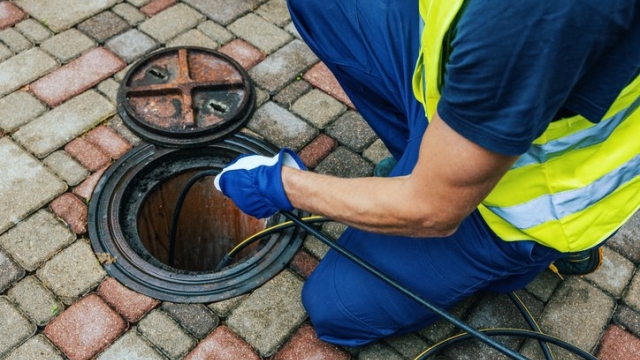Plumbing and septic systems are essential components of any modern home, ensuring the smooth flow of water and keeping our environment clean and healthy. Whether you’re building a new house or renovating an existing one, understanding the intricacies of these systems is crucial for their optimal functioning. In this guide, we will delve into the world of plumbing and septic, exploring the various components, their interconnections, and ways to effectively maintain them.
Plumbing refers to the network of pipes, fixtures, and valves that distribute water throughout a building. This intricate system enables us to access clean water for drinking, cooking, bathing, and various other activities. From the main water supply line that enters the house to the individual pipes leading to different rooms and appliances, each component has a specific role to play in ensuring a seamless water supply. Additionally, plumbing systems also include drainage pipes that carry wastewater away from the building, preventing any potential health hazards.
On the other hand, septic systems are responsible for the proper disposal of wastewater from properties that are not connected to the municipal sewer system. These underground systems utilize a combination of natural processes to treat the wastewater before releasing it back into the soil. A septic tank, often made of concrete or plastic, collects and separates the solid and liquid waste. The liquid component, known as effluent, then flows into a drainage field, where it undergoes further treatment through soil filtration. Understanding the functionality of these systems is vital in order to maintain their efficiency, prevent backups, and avoid contaminating the surrounding environment.
Now that we have a brief understanding of the importance of plumbing and septic systems, let’s delve deeper into the various components and explore the best practices for their installation and maintenance. Whether you’re a homeowner, a renter, or simply curious about the workings of these systems, this guide will equip you with the knowledge needed to master the flow and ensure the smooth operation of your plumbing and septic systems. So let’s get started and uncover the secrets behind these vital elements of our everyday lives.
Understanding Plumbing Systems
Plumbing systems are an essential component of any building, whether residential, commercial, or industrial. They ensure the efficient supply of clean water and the proper removal of waste through a network of pipes and fixtures. Proper understanding of plumbing systems is crucial for homeowners and professionals alike to ensure the smooth functioning of the entire system.
The plumbing system primarily consists of three main parts: the water supply system, the drainage system, and the fixture set. The water supply system brings in clean water from a municipal source or well, providing us with the water we use for drinking, bathing, and other daily activities. On the other hand, the drainage system is responsible for carrying away wastewater and sewage, preventing contamination and maintaining hygiene.
In a plumbing system, pipes act as the main channels for water supply and drainage. These pipes are usually made of materials such as copper, PVC, or iron, depending on the specific needs and requirements of the building. Fixtures, including sinks, toilets, showers, and faucets, are connected to these pipes to facilitate the use of water and ensure its proper disposal.
Understanding the layout and functioning of the plumbing system is vital for troubleshooting and maintenance. By knowing where the main shut-off valves are located and how the drainage system is connected, homeowners can quickly respond to potential issues and prevent water damage. Additionally, regular inspections and maintenance can help identify and resolve any potential leaks or clogs, ensuring the longevity and efficiency of the plumbing system.
By gaining a deeper understanding of plumbing systems, homeowners can better manage their water usage, conserve resources, and reduce utility bills. Furthermore, knowledge of plumbing systems can be valuable when undertaking home renovations or remodeling projects that involve changes to the existing plumbing infrastructure.
Maintaining and Troubleshooting Septic Systems
Regular maintenance and proper troubleshooting are crucial for the optimal functioning of septic systems. By following these guidelines, you can ensure the longevity and efficiency of your septic system.
- Water heater repair
Regular Pumping: One of the key maintenance tasks for septic systems is regular pumping. This involves removing accumulated sludge and scum from the septic tank. It is recommended to have your septic tank pumped every 3 to 5 years, depending on its size and usage. Neglecting this task can lead to clogs, backups, and potential system failures.
-
Water Conservation: Conserving water is not only environmentally friendly but also important for the health of your septic system. Excessive water usage can overload the system, leading to poor treatment and potential damage. Be mindful of water usage by fixing leaks, installing water-saving fixtures, and avoiding excessive water consumption.
-
Proper Waste Disposal: Septic systems rely on the natural breakdown of waste materials. To maintain the system’s balance, it is important to be mindful of what goes down the drain. Avoid flushing non-biodegradable items, chemicals, grease, and excessive solid waste. These can disrupt the natural processes within the septic system and cause blockages and inefficiencies.
-
Regular Inspections: Performing regular inspections can help identify any potential issues before they escalate. Hire a professional to inspect your septic system every 1 to 3 years, or as recommended by your local regulations. They can check for leaks, assess the tank’s condition, and provide maintenance advice specific to your system.
-
Recognizing Warning Signs: Being aware of warning signs can help you troubleshoot septic system problems. Look out for slow drains, gurgling sounds, unpleasant odors, and sewage backups. These signs indicate potential issues that require immediate attention. Ignoring them can lead to more significant and expensive problems down the line.
Maintaining and troubleshooting your septic system is essential for its proper operation. Following these guidelines can help prevent costly repairs, extend the lifespan of your system, and ensure a healthy environment for you and your loved ones. Remember, a well-maintained septic system is a key component of a well-functioning home.
Tips for Efficient Water Flow
-
Regular Maintenance: Proper maintenance of your plumbing and septic systems is crucial for ensuring efficient water flow. Regularly inspect and clean your pipes, drains, and septic tank to remove any blockages or buildup that may impede water flow. Additionally, address any leaks or drips promptly to prevent wasteful water usage.
-
Install Water-Saving Fixtures: Another effective way to optimize water flow is by installing water-saving fixtures throughout your plumbing system. Consider replacing older faucets and showerheads with low-flow alternatives that restrict water flow without compromising functionality. These fixtures can significantly reduce water consumption, promoting efficiency and conservation.

-
Practice Water-smart Habits: Adopting water-smart habits in your everyday routine can contribute to efficient water flow and conservation. For instance, avoid running water unnecessarily, such as leaving the faucet running while brushing your teeth or letting the shower run for extended periods. Additionally, be mindful of your water usage when doing laundry or washing dishes, opting for efficient cycles or using dishwashers with high water-efficiency ratings.
Remember, efficient water flow not only saves water but also reduces the strain on your plumbing and septic systems, prolonging their lifespan and minimizing the need for costly repairs. By implementing these tips, you can master the flow of water in your home while also contributing to a more sustainable environment.





